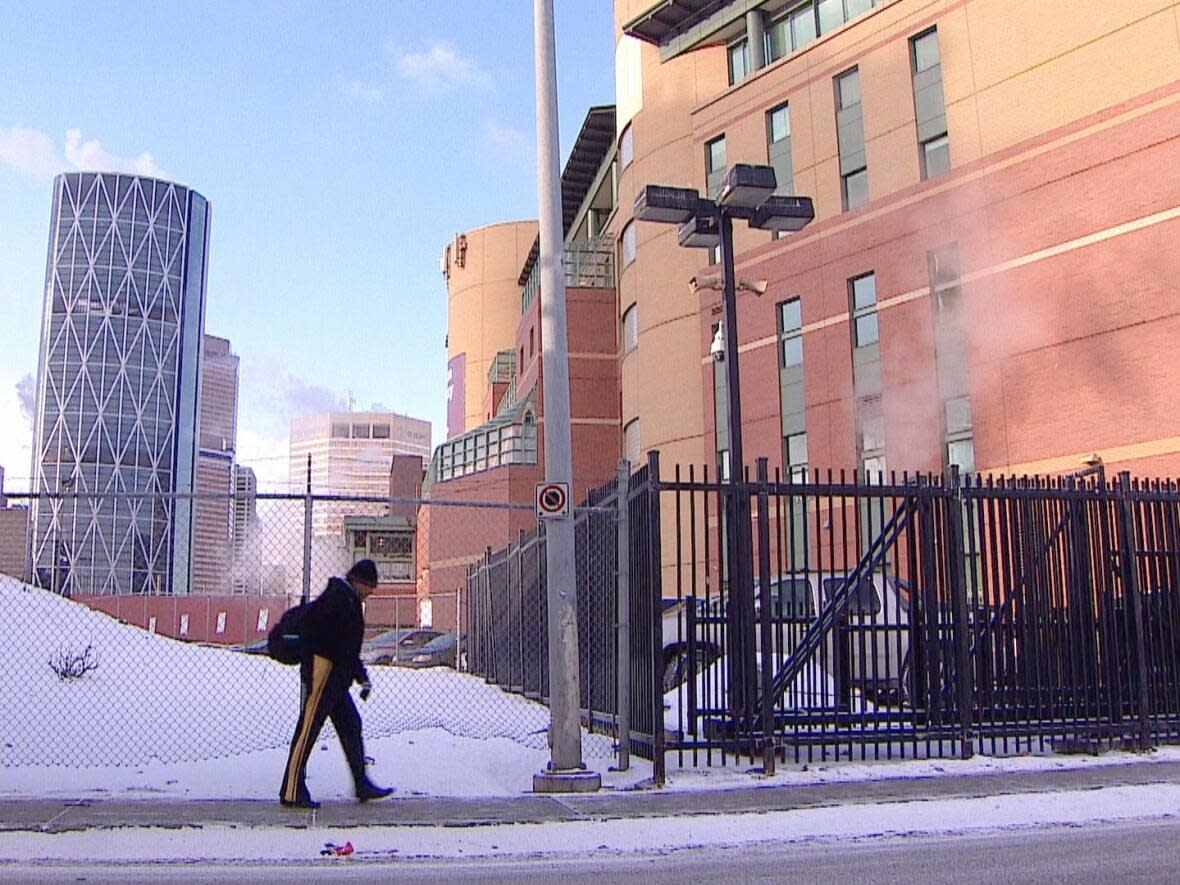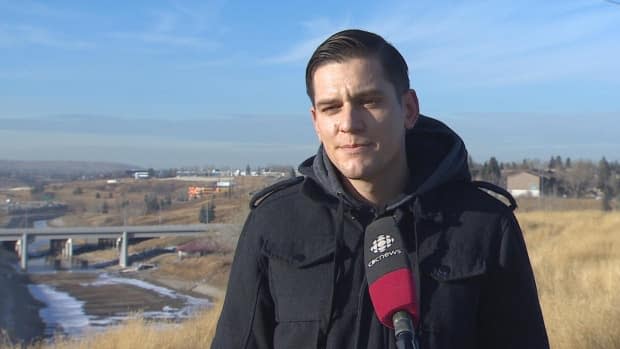Calgary homeless outreach team asks city council to help create emergency warming centres

A non-profit homeless outreach team is asking city council for permission to create emergency warming centres at CTrain stations in Calgary, modelled after similar spaces across Canada, to reduce frostbite and other extreme weather-related conditions for the city's homeless population.
In his six years of walking the streets of Calgary as part of the outreach team, Chaz Smith has seen the effects of the extreme cold among those experiencing homelessness each winter.
With proof of vaccination requirements in place across the city, the founder of Be The Change YYC says it will be harder for many homeless individuals to stay warm this year as they often don't have proper identification or vaccine records.
"It has been extremely difficult for people experiencing homelessness to have any place to warm up due to these barriers," said Smith.
This is why he approached Mayor Jyoti Gondek's deputy chief of staff, as well as city council, to help him create drop-in emergency warming centres across the city.

According to a 2014 Alberta Health report, 37 per cent of frostbite discharges in Calgary between 2003 and 2014 were homeless patients. Of those patients, 50 per cent received an amputation, usually fingers or toes.
"While the homeless population only makes up 0.25 per cent of our population, it's extremely high that 37 per cent of all hospital discharges relating to frostbite is indeed a person experiencing homelessness," Smith told the Calgary Eyeopener on Tuesday.
On top of that, some don't survive the cold.
Alberta is investing $21.5 million in pandemic funding to ease capacity issues at shelters across the province this winter, Premier Jason Kenney announced Wednesday.
Mayor Jyoti Gondek told reporters on Friday that she was looking to see what funding is available from the province.
"Ensuring the safety of all Calgarians is a priority. We've heard the communities' concerns about the need for warming stations," said Gondek's office in a statement. "Mayor Gondek will be meeting with organizations who provide shelter and housing services in the near future to ensure Calgarians in need have places to get and stay warm."
Using underutilized infrastructure
Smith approached city council to create three emergency warming centres across the city — in the city's north, south and downtown.
"What I recommended is that we use train stations as the infrastructure already exists," said Smith.
He wants the drop-in warming centres to be activated once the temperature reaches or feels like –10 C, monitored by outreach workers and peace officers.
People would be provided with emergency blankets, gloves and tuques. They would also receive hand and feet warmers to prevent frostbite hospitalizations, and emergency shelter if needed.
"Other cities have emergency warming spaces where people experiencing homelessness can simply drop by for a few hours to warm up," he said, referring to Vancouver, Toronto, Montreal, in particular.
Smith has reached out to the Calgary Drop-In Centre, Alpha House Society and Calgary Homeless Foundation to get on board to create and manage the sites.

Shaundra Bruvall, the Alpha House Society's communications and fund development manager, says they aren't opposed to warming centres, but they see the benefit of people accessing existing services to stay warm.
"We do see the benefit of having folks come to more of those permanent social service providers so that they can access other services like a clinic, food, laundry or showers or donations for clothing," said Bruvall.
But Smith says there are a number of reasons why people choose not to access shelters, such as feeling unsafe or not being able to bring in pets.
Similar centres across the country
As a life-saving measure for those who choose not to access shelters, the City of Vancouver launched its first emergency warming centres in 2017. They are activated when the temperature hits or feels like –5 C.
They operate in addition to the city's extreme weather response shelters, which are activated at 0 C.
"The city really wanted to ensure there were as many options as possible to ensure life safety," said Bruk Melles, director of homelessness services for the City of Vancouver.
Visitors can drop in and stay as long as they need to warm up — even if that's all night, says Melles.
She says the Vancouver centres were open for 13 nights last winter, as those were the only nights that hit –5 C between November 2020 and March 2021.
That's compared with 94 days that reached that temperature in Calgary in that same time span, according to the Government of Canada's daily weather data report.
Melles says the city tries to build on existing social infrastructure to set up these spaces, such as community centres, libraries and daytime drop-in spaces.
She says it's important staff at these centres are trained in nonviolent crisis intervention and that COVID-19 protocols are enforced.
With files from the Calgary Eyeopener


